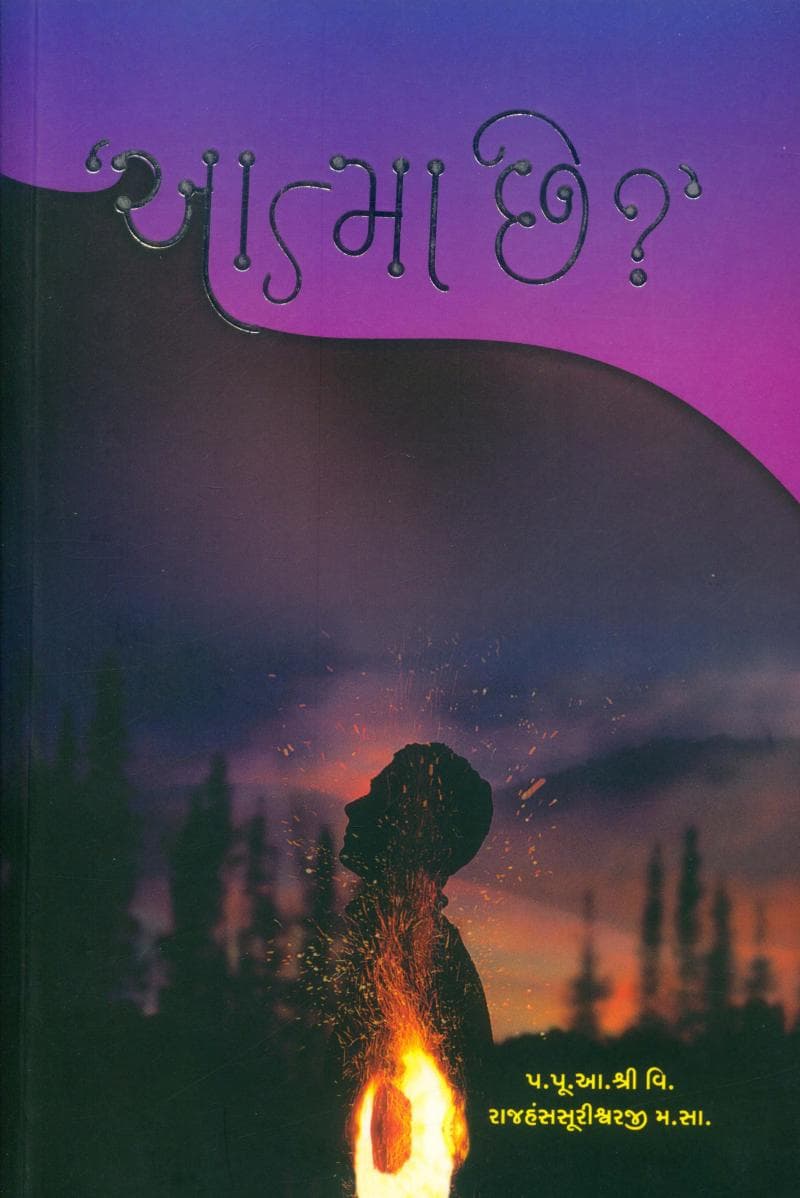Aatma Che
Added to library: September 1, 2025

Summary
While I cannot access external websites or specific catalog links to retrieve the content of "Aatma Che" by Rajhanssuri, I can provide a comprehensive summary of what a book with this title, published by Shrutgyan Sanskarpith, would likely cover within the context of Jainism.
Likely Content and Core Themes of "Aatma Che" (The Soul Exists)
Based on the title "Aatma Che" (meaning "The Soul Exists" or "The Soul Is") and the publisher Shrutgyan Sanskarpith (which specializes in Jain literature and knowledge), this book is almost certainly a foundational text exploring the Jain understanding of the soul (Aatma or Jiva). It would likely delve into the following key concepts:
I. The Nature of the Soul (Aatma):
- Eternal and Unchanging: The book would emphasize that the soul is an eternal, uncreated, and indestructible entity. It has no beginning or end.
- Consciousness and Knowledge: The soul's intrinsic nature is pure consciousness (Chaitanya) and infinite knowledge (Anant Gyan). These are its inherent qualities, though they may be obscured by karma.
- Indivisible: The soul is a single, monolithic entity, not divisible into parts.
- Experiencer: The soul is the entity that experiences the consequences of actions (karma).
- Immaterial: The soul is not physical. It has no form, color, smell, taste, or touch. It is distinct from the body and all material substances.
II. The Relationship Between the Soul and the Body/Matter:
- Karma as the Bond: The core of Jain philosophy is the concept of karma. The book would explain how the soul, through its thoughts, words, and actions, attracts karmic particles. These particles are subtle matter that cling to the soul, obscuring its pure nature and leading to its transmigration through various life forms.
- Ignorance (Moha) as the Root Cause: The book would likely highlight ignorance (Moha) or delusion as the primary reason for the soul's entanglement with karma. This ignorance prevents the soul from recognizing its true, pure nature.
- The Cycle of Birth and Death (Samsara): Through the bondage of karma, the soul is trapped in the continuous cycle of birth, death, and rebirth. This cycle involves experiencing various types of bodies and suffering the consequences of past actions.
III. The Path to Liberation (Moksha):
- The Goal: Realizing the Soul's True Nature: The ultimate aim of Jain practice is to liberate the soul from the cycle of samsara and realize its inherent qualities of infinite knowledge, perception, bliss, and energy.
- The Three Jewels (Triratna): The book would undoubtedly expound on the path to liberation, which is adherence to the Three Jewels:
- Samyak Darshan (Right Faith/Perception): Correct understanding and belief in the eternal nature of the soul and the principles of Jainism.
- Samyak Gyan (Right Knowledge): Accurate and discriminative knowledge of the soul, karma, and the path to liberation, gained through scripture and introspection.
- Samyak Charitra (Right Conduct): Ethical behavior and adherence to the vows and principles prescribed by Jainism.
- The Role of Austerity (Tapas) and Renunciation (Sanyam): The book would likely discuss the importance of self-discipline, austerities, and renunciation in shedding accumulated karma and preventing the influx of new karma. This would include detailed explanations of various types of austerities.
- The Five Great Vows (Pancha Mahavrata): The core ethical principles of Jainism – Non-violence (Ahimsa), Truthfulness (Satya), Non-stealing (Asteya), Chastity/Celibacy (Brahmacharya), and Non-possession/Non-attachment (Aparigraha) – would be central to the discussion on Right Conduct.
- Meditation and Self-Inquiry: The book might also touch upon the importance of meditation (Dhyana) and self-inquiry as tools for understanding the soul and its true nature.
IV. Potential Supporting Concepts:
- The Six Substances (Dravyas): The book might introduce the fundamental Jain metaphysical concept of the six eternal substances (Jiva, Ajiva, Pudgala, Dharma, Adharma, Akasha, Kala) as the constituents of the universe, and how the soul interacts with them.
- The Seven Tattvas (Principles): A discussion on the seven core principles of Jainism (Jiva, Ajiva, Punyasrav, Papyasrav, Bandh, Samvar, Nirjara, Moksha) would be highly probable, as these form the framework for understanding the soul's journey.
- The Different States of the Soul: The book might describe the various states or classifications of souls based on their karmic bondage and spiritual development.
Target Audience and Tone:
"Aatma Che" is likely intended for both new students of Jainism and those seeking a deeper understanding of its core philosophy. The tone would probably be instructive, devotional, and encouraging, aiming to inspire readers to embark on the spiritual path towards self-realization.
In essence, "Aatma Che" would be a profound exploration of the Jain belief in the soul, its predicament, and its ultimate liberation. It would serve as a guide to understanding the self, the universe, and the practical steps required to achieve spiritual perfection.
If you can provide any specific passages or themes you'd like me to elaborate on from the book (if you have access to its content), I can offer a more tailored summary.